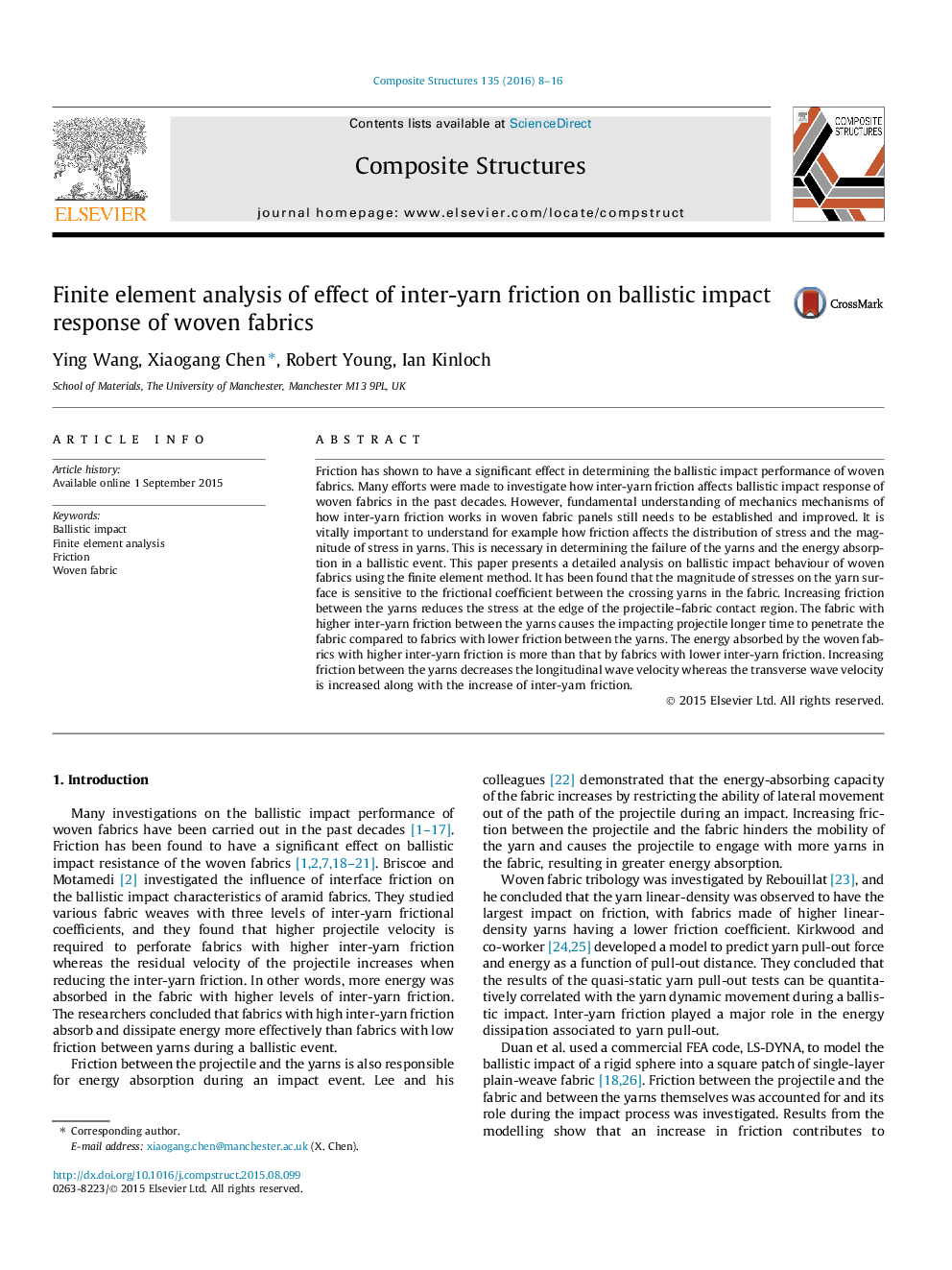| Article ID | Journal | Published Year | Pages | File Type |
|---|---|---|---|---|
| 251162 | Composite Structures | 2016 | 9 Pages |
Friction has shown to have a significant effect in determining the ballistic impact performance of woven fabrics. Many efforts were made to investigate how inter-yarn friction affects ballistic impact response of woven fabrics in the past decades. However, fundamental understanding of mechanics mechanisms of how inter-yarn friction works in woven fabric panels still needs to be established and improved. It is vitally important to understand for example how friction affects the distribution of stress and the magnitude of stress in yarns. This is necessary in determining the failure of the yarns and the energy absorption in a ballistic event. This paper presents a detailed analysis on ballistic impact behaviour of woven fabrics using the finite element method. It has been found that the magnitude of stresses on the yarn surface is sensitive to the frictional coefficient between the crossing yarns in the fabric. Increasing friction between the yarns reduces the stress at the edge of the projectile–fabric contact region. The fabric with higher inter-yarn friction between the yarns causes the impacting projectile longer time to penetrate the fabric compared to fabrics with lower friction between the yarns. The energy absorbed by the woven fabrics with higher inter-yarn friction is more than that by fabrics with lower inter-yarn friction. Increasing friction between the yarns decreases the longitudinal wave velocity whereas the transverse wave velocity is increased along with the increase of inter-yarn friction.
